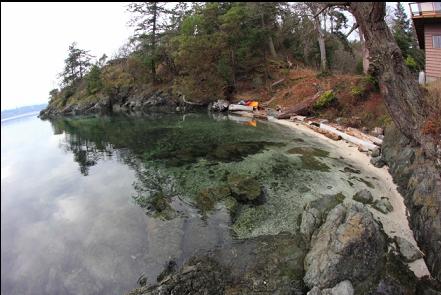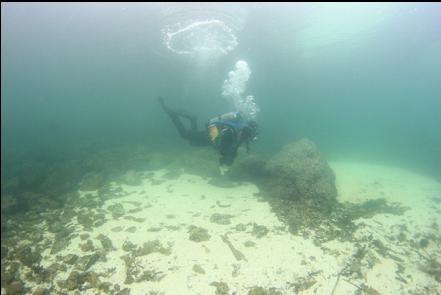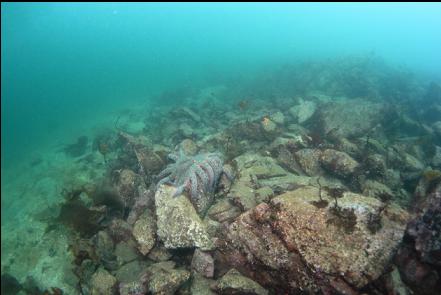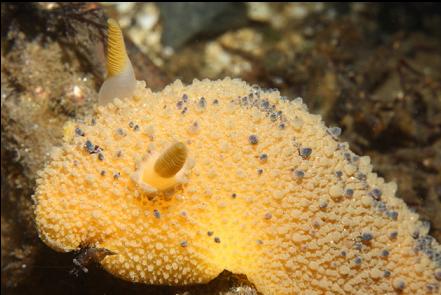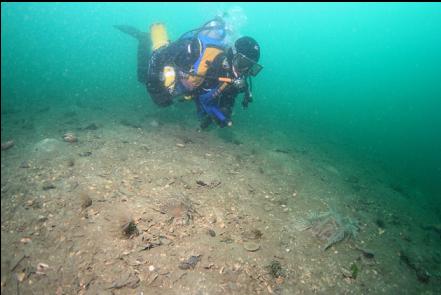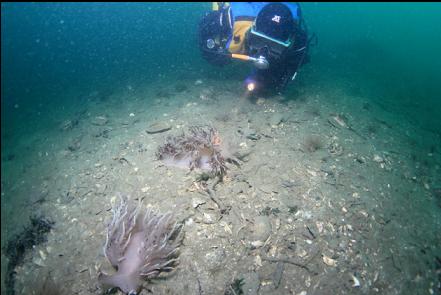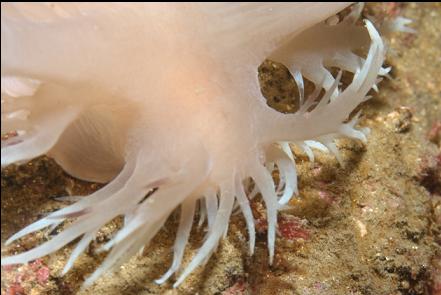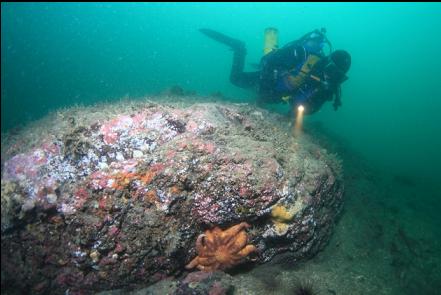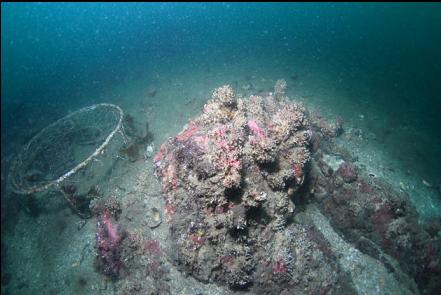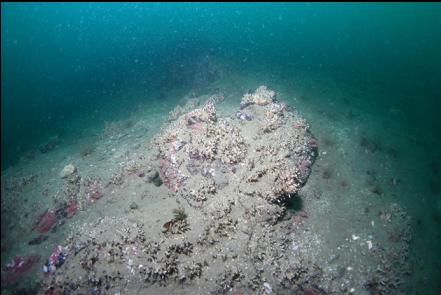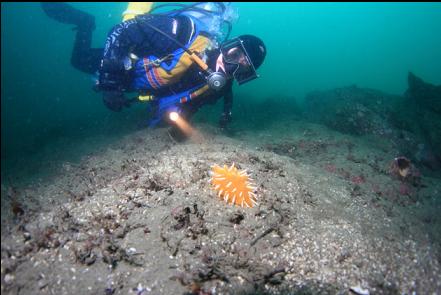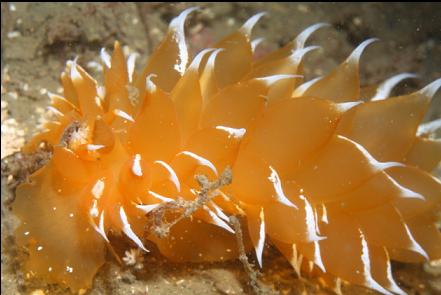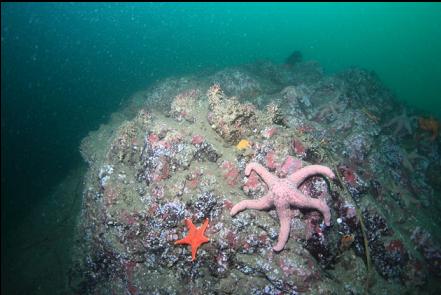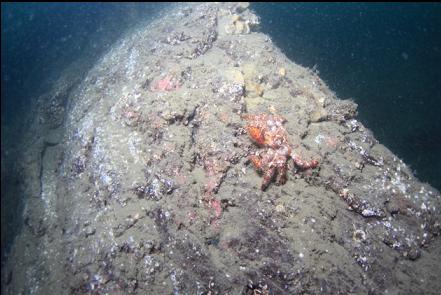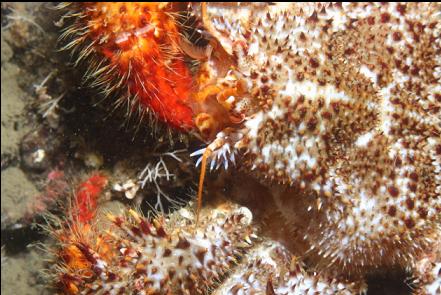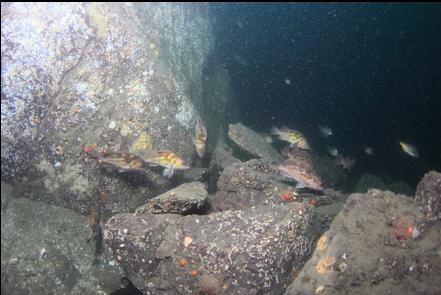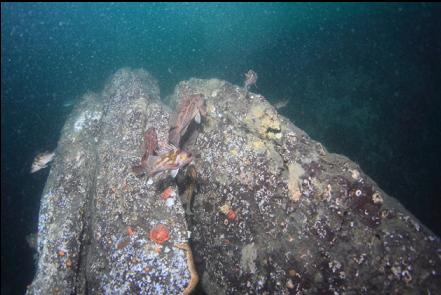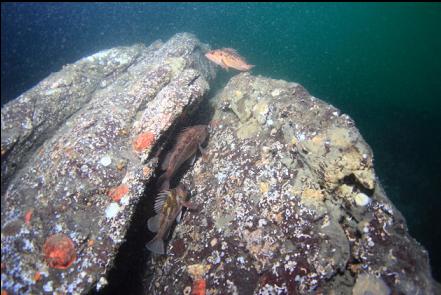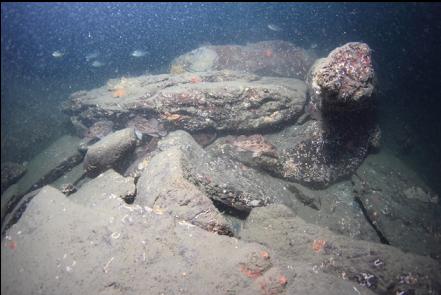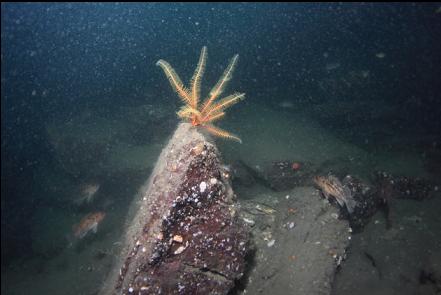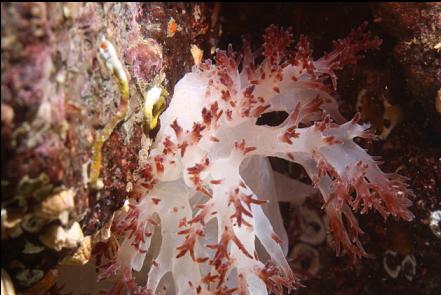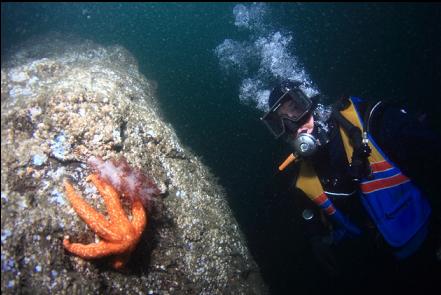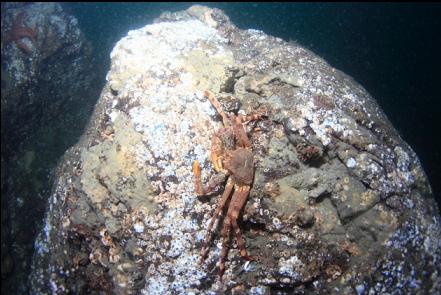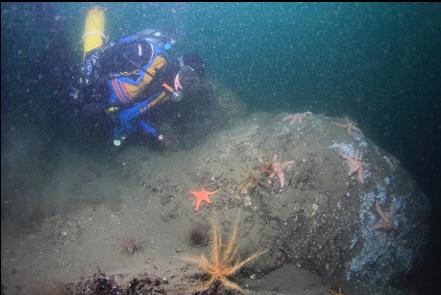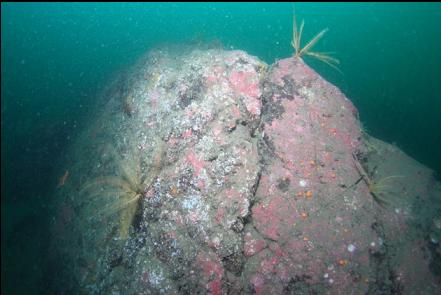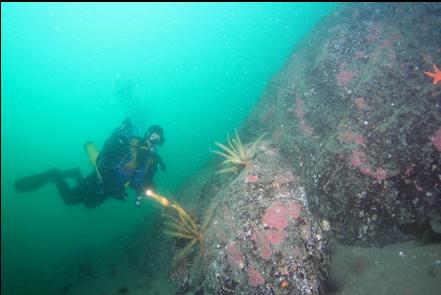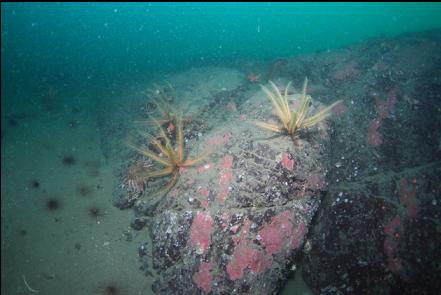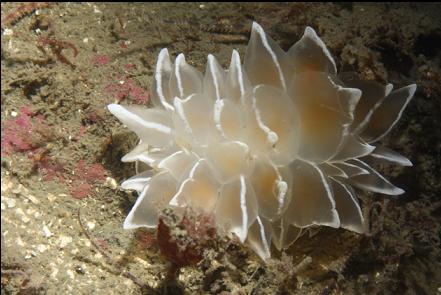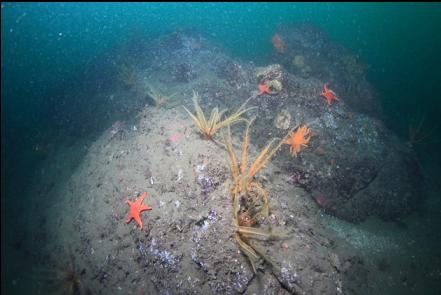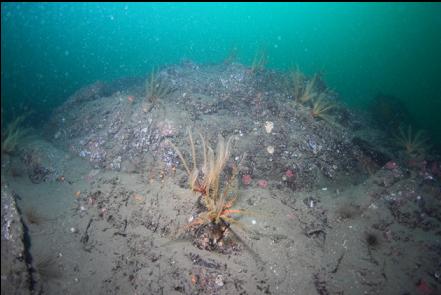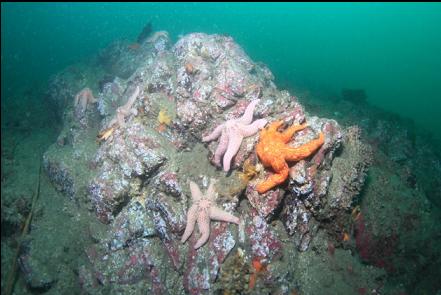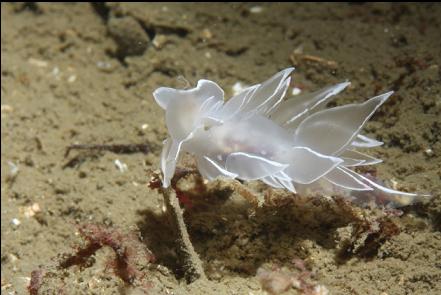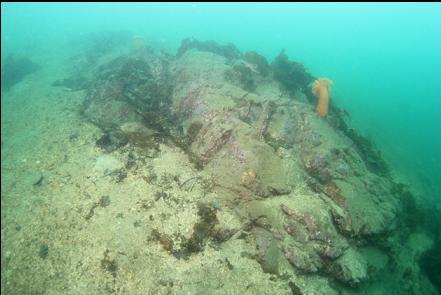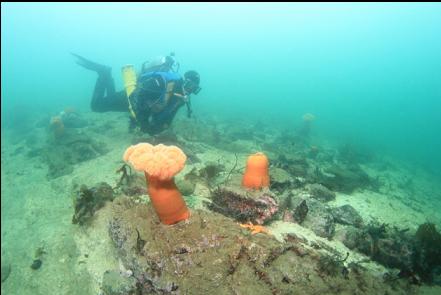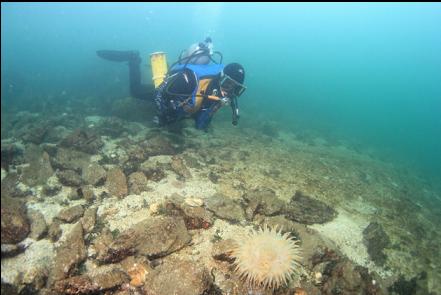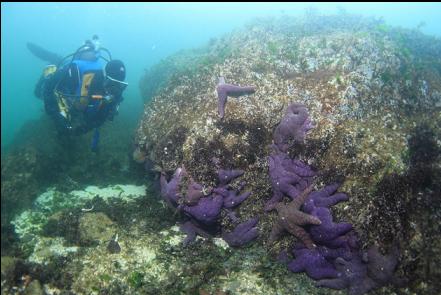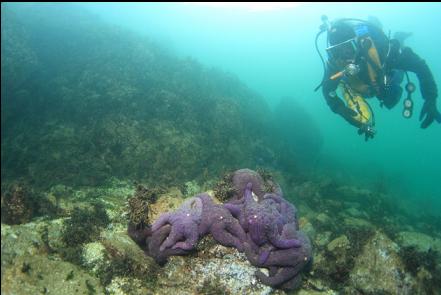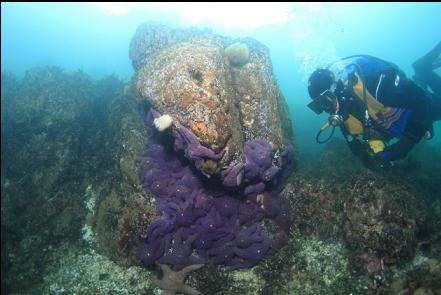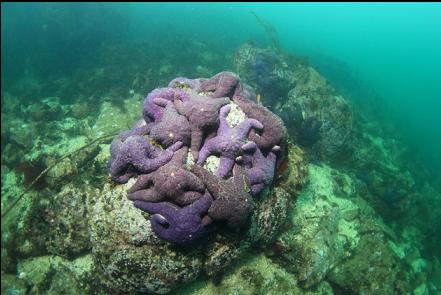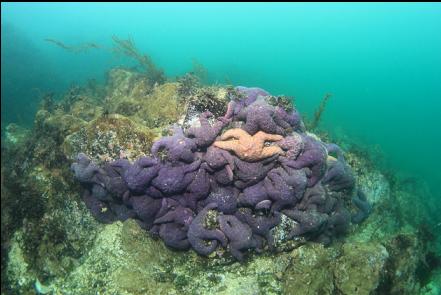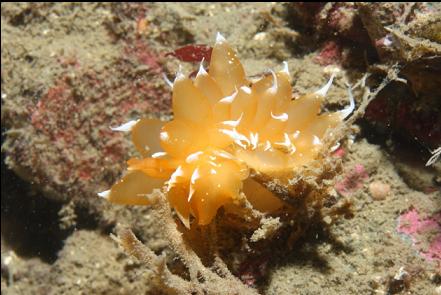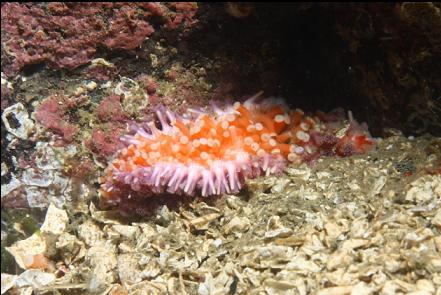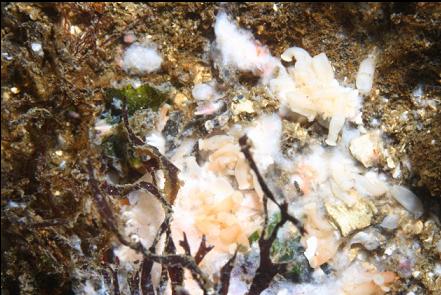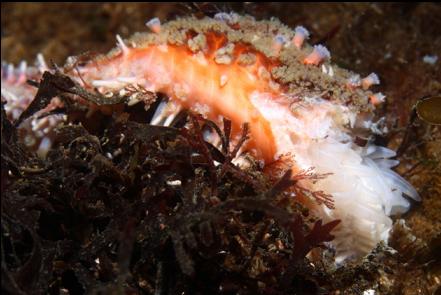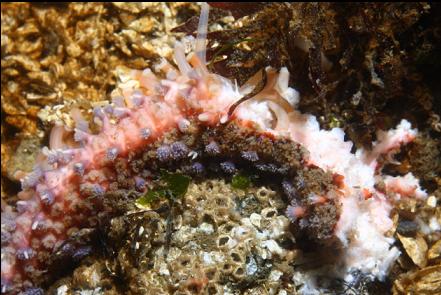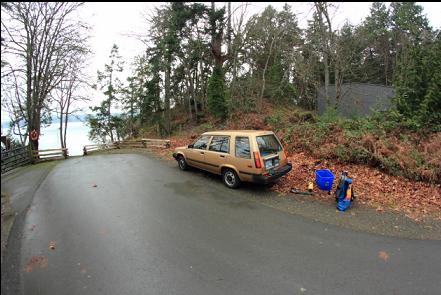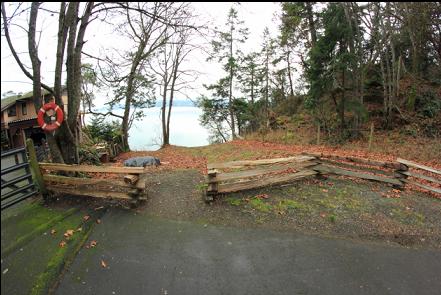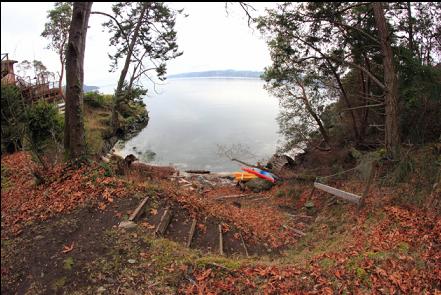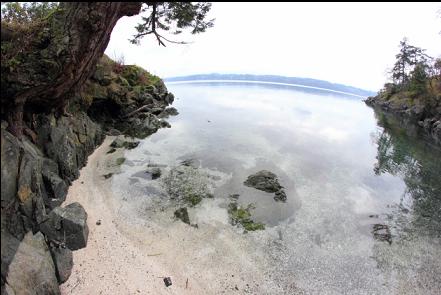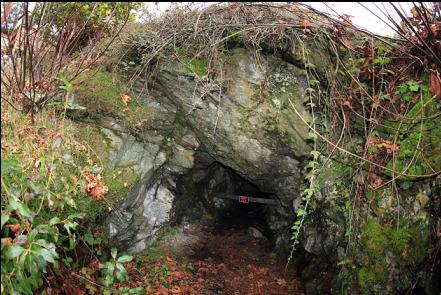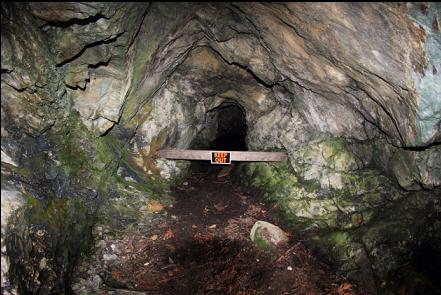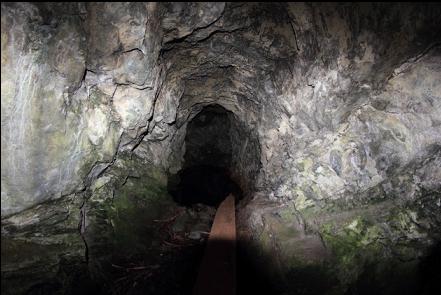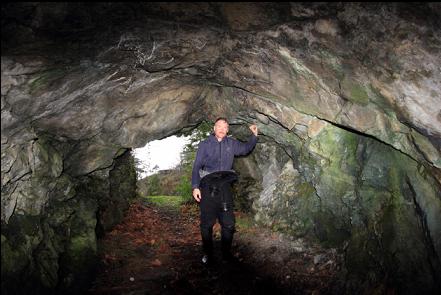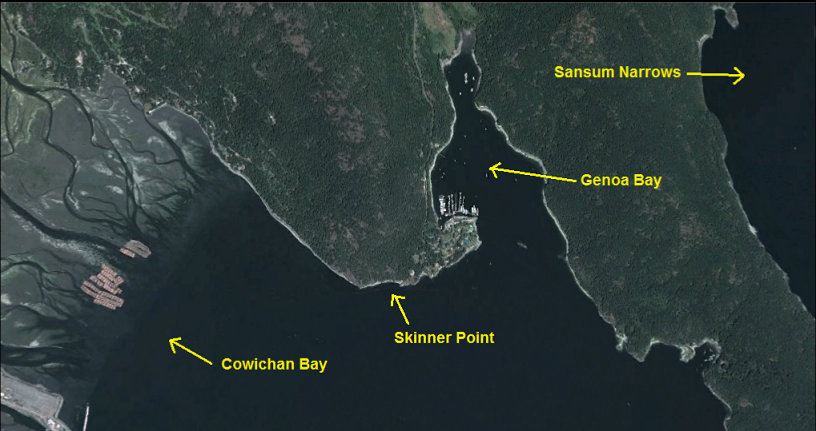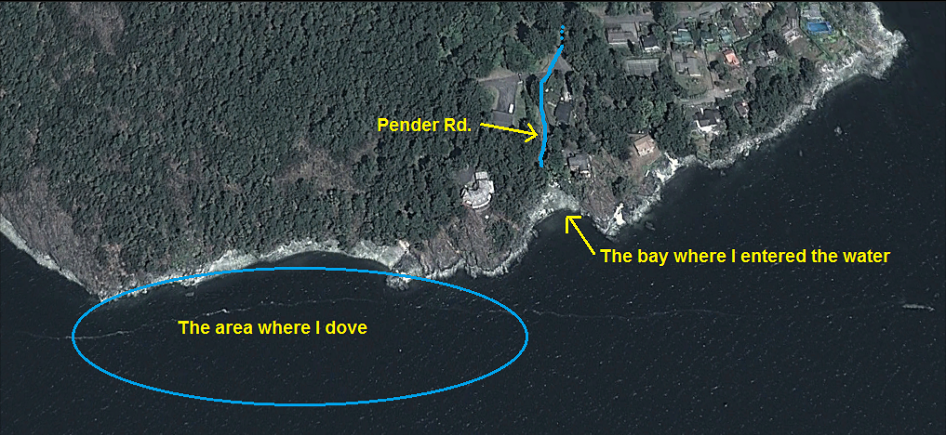Skinner Point is part of the steep rocky shoreline on the North side of Cowichan Bay. The marine chart shows a steep drop underwater to a bit over 100 feet deep. I never realised that there was shore access to the water here. I was recently driving around the Duncan area and I paid a visit to Genoa Bay since I'd never been there before. I noticed a road leading towards Skinner Point (Pender Rd. ). At the end of the road there was one of the public right-of-ways to the water as guaranteed by the Land Title Act. There was a split-rail fence across the end of the road to discourage people from driving their cars off the cliff. A gap in the fence allowed pedestrian access and a short set of steps lead down to a white crushed-shell beach in a tiny bay. Skinner point was just around the right-hand side of this bay (when looking out from shore). I came back the next day (Dec. 31, 2013) for a dive. The bay was full of sand and small rocks. At the right-hand corner of the bay there was a broken-rock slope which met silty sand at about 30 feet deep. I followed this slope out to the right (West). Visibility was about 20 feet. There wasn't much living around these rocks, just a few plumose anemones, red rock crabs and some seastars. I noticed that many of the seastars (especially the sunflower stars) had the strange "wasting disease" that is affecting seastars all along the Pacific coast of North America. All that was left of many seastars here were piles of dissolving bits and separated arms. On the silty slope there were lots of tube-dwelling anemones and giant nudibranchs. There were a few small rocky reefs sticking out of the mud. They were pretty silty too. Eventually, I found one that led deeper. At 50 feet deep, the rocks were covered with cemented tube worm colonies. I found this strange in an area that I assumed was free from current. Maybe this spot does catch just enough current to allow the tube worms to live, but not enough to sweep away the silt around the colonies. Maybe the nearby Cowichan River delta dumps enough silt to keep up with any tidying current. I followed the rocky area deeper. The tube worm colonies disappeared and the sloping reef turned into a wall that went straight down in places. On this wall the visibility dropped to only 10 feet and it was almost too dark to see without a light. The wall was pretty bare. I saw a few crabs (lithode and scaled). The base of the wall ended in a pile of fallen rocks at about 100 feet deep. One part of the wall stuck out farther and I followed it down to 110 feet deep, where it met the muddy slope. In the rock piles at the base of the wall I saw all the rockfish that I didn't see during the rest of the dive. There were copper, brown and a few Puget Sound rockfish along with some perch. I swam back up the wall and noticed several feather stars on the rocky reefs at about 60 feet deep. I'm not sure if there are more of these rocky areas out along the slope of silt. Back up in the shallows there were clusters of purple seastars on the rocks. I did notice a slight current here flowing against me as I swam back to the small bay. If I was a local diver, I'd probably dive here a few times and look for more rocky reefs, but since diving here requires a drive for me, I don't think I'll be back. I wasn't too impressed by the mostly-bare, silty rocks. On a non-diving note, after the dive I saw a hole in the rock above the high tide line on one side of the bay. It looked like an old mine tunnel. It only went in for about 15 feet and I didn't see any hidden gold bars or rusty Spanish armor, but it was a neat reminder of the area's history.


